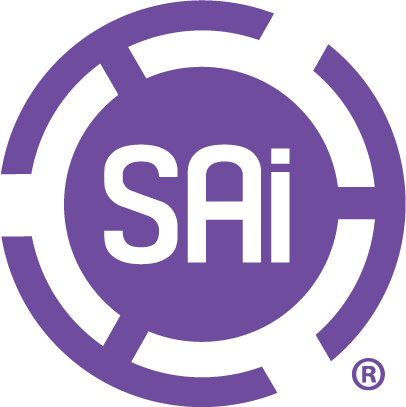Although metal fabrication is common, few people are aware of how it is made and how the process works. Metal fabrication, to put it simply, is a manufacturing technique used to form metal into components or finished goods. Metal fabrication is used to mass produce certain things but can also be used in making runs of specially made fabricated products.
To be effective, metal fabrication requires a lot of effort and education. Knowing which metals provide a certain output is necessary, as are the right techniques, equipment, and software to make that result achievable. Read on to equip yourself with the knowledge you need to understand the fabrication industry.
Materials Used in Fabrication
Steel, copper, or iron are the most common materials in metal fabrication for industrial uses. These metals are versatile and robust enough to meet demands in the majority of situations.

Bronze, brass and aluminum are also frequently used in the fabrication process but are typically reserved for smaller parts or those with specific needs. These may be found more often in non-commercial fabrication shops.
Common Types of Fabrication Machinery
Waterjets are the most practical and economical way to cut a range of materials. Using water and an abrasive material these industrial machines can cut almost anything. With the exception of cutting steel that is at least two inches thick, which can result in temperatures as high as 120 degrees F, these machines generate essentially no heat. Waterjets work by forcing water out through the nozzle to cut material. There is an abrasive hopper system in almost all jets. A metered flow of granular abrasive, typically garnet, is incorporated into this function to help cut the aforementioned materials.
Modern cutting technologies include laser cutters. Lasers can be used for a variety of tasks, although cutting, welding, marking, and surface treatment are the most frequent ones. Industries that demand a high level of precision for cutting complicated pieces are typically use these types of machines. That includes sectors for electronics, medical, shipbuilding, aerospace, automotive and more of that kind. Thermal energy is used by these laser systems to remove or cut material from the workpiece through melting, vaporization, burning, or blowing. This results in a superior surface polish that is, in most cases, essential to the overall success of the finished product.
While it might seem fictitious, cutting some materials with plasma is a standard and widely used technique. The materials that can be cut using plasma, however, must be electrically conductive, such as steel, aluminum, brass, and copper. Plasma cutting systems create an electric channel from the cutting head through the workpiece and back to the cutting head using an accelerated jet of exceptionally hot, electrically ionized gas (plasma). Because they are quick, precise in their cuts, and comparably very cheap to run, these fabrication machines are used in many different applications.

Fabrication Process
Designing the Project: The part’s design is the first and most crucial phase. Computer-aided design (CAD) or computer-aided manufacturing (CAM) systems are frequently used by metal fabricators. Before any metal work is done, prototypes are created using CAD and CAM software. This stage helps to ensure that the product will look and function as needed given that a project may have several components.
Fabricating the Part: The next step is actually cutting the pieces. A metal fabricator shapes and cuts each of the components created in the design phase. There is a particular machine employed to carry out each special process. For instance, a metal fabricator may need to use a laser cutter, a press brake, or a roll forming machine on any given task. Using CNC (computer numerical controls) machinery, each item is cut precisely to order.
Assembling and Finishing the Project: Finishing and putting the pieces together to form the finished product are the final steps in metal fabrication. A custom fabrication project’s finish can help to protect the metal, increase the project’s lifespan, and produce a tidy, polished appearance. There are a number of metal finishing possibilities for such projects. Powder coating, galvanizing, sand blasting, polishing, and hot blackening are some of the more common options chosen by metal workers.
Fabrication Design Software
Metal fabrication software is a form of industrial software that is unique to the metal and steel fabrication industries. This type of software provides an easy and powerful way to output information to a fabrication machine, whether that be a waterjet, laser system, plasma system, and other similar machines.
During the planning stages, metal fabrication design software might be used. These tools can make it much easier to generate 2D or 3D drawings and diagrams, manage computer-aided designs (CAD), and provide an electronic means for creating and modifying items in a job. You’ll find fabrication software in most fabrication/metal working shops in this day and age.
Another advantage of introducing design software into your manufacturing process is that it may assist you in calculating bends and drafting highly particular sheet metal features. Good drafting with an integrated bill of materials can help you remodel your metal fabrication manufacturing process using high-quality graphics to spot faults and issues before they emerge.
A good fabrication design software will also have nesting capabilities which automatically arranges parts on the plate to maximize material utilization.
What is the Best Fabrication Software?
When choosing the right fabrication software for you, it all depends on your needs. You’ll want to evaluate your needs and compare them to what each software provider offers. The options vary greatly by function and price.
SAi EnRoute fabrication software is intuitive CAD/CAM software designed to provide an easy way to create and output files for CNC Plasma, Waterjet or Laser. EnRoute Fabrication combines an easy-to-use interface and simplified output process to provide a complete and powerful CAD/CAM solution at a great value.
EnRoute’s CAD capabilities make it easy to design parts and edit parameters. Behind EnRoute’s user-friendly interface is a powerful, state-of-the-art CAM program with features that will help you improve your cut quality, increase your machine throughput, and reduce your material waste.
CAD Drawing Tools
EnRoute Fabrication offers a logically organized interface and CAD drawing tools that lets you design both visually or parametrically.
Cleanup and Editing Tools
EnRoute Fabrication’s cleanup tools and editing tools make it amazingly fast and easy to reduce points and remove unwanted contours and intersections to prepare your parts for cutting on a CNC plasma or waterjet machine.
Fast and Efficient Vectorizing
EnRoute’s vectorization tool – the best in the industry – converts bitmap images into clean lines ready for resizing or cutting in just one click of your mouse. This is a huge time-saving feature.
Kerf Compensation
A simple dialog box interface allows you to easily determine what parameters you want to use when cutting and stores the information for easy recall.
Cutting Toolpaths
EnRoute Fabrication includes several advanced toolpathing features, such as Looped Corners, and Smart Entry-Exit Positioning, designed to optimize efficiency and to provide high quality finished parts.
Nesting Suite
EnRoute Fabrication simplifies the output process with four nesting algorithms that will automatically position your parts to save material and the Nesting Optimizer feature gives you the ability to specify the number and priority of parts to be cut prior to nesting.
Learn more about how SAi EnRoute Fabrication software can help you achieve your goals.






